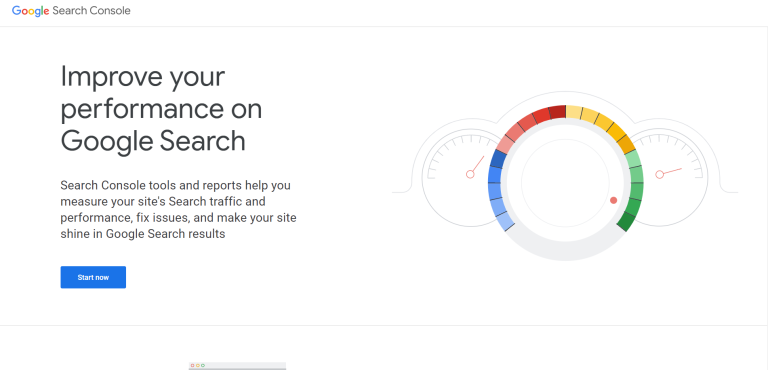Over the past few years, the process of online content consuming has undergone extreme transformations. While there was a time when the audience used to rely upon text information, today, an approximate of 65% of people are visual learners.
In such a scenario, you aren’t left with any reason to not integrate infographics in your strategies. Moreover, the fact that infographics can help increase the website traffic by 12% can completely change the game for you.
Keeping in mind how the information is being shared on social media platforms, infographics have managed to gain a lot of popularity. Thus, if you follow the right directions for illustrations and text, you can do 323% better than your competitors.
So, this post is all about letting you know the key elements that you must include in your infographic to get the best results. But, before diving more in-depth, here’s all about infographics that you should know.
What Is an Infographic?
An infographic, also known as information graphic, is a mere representation of data in a visual format, which is quite exciting and fun to read.
They’re meant to simplify the complex information. Furthermore, they even make it easier for a not-so-techy-person to digest what the brand is trying to say. Adequate for almost every business, using infographics is one of the most valuable internet marketing tactics today.
Why Should You Use Infographics?

Human Brains Process Visuals Better
There’s no denying the fact that a human brain processes more information if it’s presented in a visual format. In fact, it’s been proved that pictorial data is processed 60,000 times faster than the text.
It’s one of the primary reasons why an appropriately designed infographic can fetch you more user engagement. Think about it; your audience is overloaded with the information already. In such a scenario, throwing a lengthy text isn’t going to churn any results, thanks to the boring reputation of text data.
On the other hand, if you visualize the same information, it takes a new form and attracts those who don’t like reading much; thereby, garnering more attention for your brand.
Perfect Way to Tell Stories
There was a time when marketers were simply using infographics to obtain links. That’s why they couldn’t gain such a fantastic response. But, today, instead of using it as a way to get links, infographics have become more of story-telling elements, impeccable to present facts and data.
Basically, it’s the stories and data behind an infographic that matter the most. But, when you present them visually, the concept becomes alive and are seen more positively by viewers.
An attractively designed infographic can be a substantial content marketing tool. But, ensure that it’s done in the correct format to communicate your story.
Easy to Share

Apart from putting the required links in the infographic, you can even share them seamlessly. Whether it’s between team members, on social media platforms, or within articles; they’re a good way of sharing information.
This can be proven by the fact that 80% of marketers are using visual assets in social media marketing strategies. Furthermore, tweets that contain images get 18% more retweets than the ones without pictures.
Can Help Increase Conversions
Believe it or not, infographics can be an excellent tool for conversions. Let’s consider you’re selling products online, and you want to display what your online store has for the target audience.
Now, instead of writing down the product descriptions, benefits, and comparing prices, why shouldn’t you visualize this information? An infographic, with the right set of data, can make it evident for your buyers as to why they should select you over others.
Establish Your Brand’s Credibility
When you share factual data or knowledge about a specific topic, you enhance your brand’s credibility. This way, you can even establish yourself as a professional in the domain quite effortlessly.
Undoubtedly, the required research to create an attractive and successful infographic consumes experience, time, as well as knowledge. That’s something your readers wouldn’t have. So, why not you provide them the same?
Your audience is going to appreciate the newly-found knowledge and will also trust you the next time they’d look out for something in a similar niche.
Absolutely Great for SEO

As mentioned above, infographics are more share-worthy than any other form of information. Their entire concept compels the audience to like, click, and share.
This, in turn, can coerce Google to index your site higher on the search result page, thanks to the Page Ranking algorithm of this search engine. Thus, not just by people, but infographics are taken seriously by Google as well.
Most Popular Types of Infographics
- Statistical Infographic

These can be used if you want to visualize your survey results or present data from different sources. They’re also relevant if you’d want to support an argument with detailed data. They can include icons, charts, and images.
- Informational Infographic

An informational infographic will be ideal if you wish to communicate a specific concept or provide an overview of a topic to your audience. Generally, such infographics are divided into different sections with headers.
- List Infographic

If you want to share a list of resources, examples, or a collection of tips, this kind of infographic would be perfect for you. They’re eye-catching as well as straightforward. You can use bullet points, attractive colors, and creative fonts to design this one.
Key Elements That Your Successful Infographic Must Have
1. Begin with a Killer Headline
A compelling headline can intrigue a lot of people than you can imagine. Therefore, the headline of your infographic should have a curiosity factor. It should also grab their attention without disappointing or overpromising them.
Also, keep in mind that it isn’t too long. You can strive for almost 70 characters and nothing more than that. Wordy, long headlines can push people away.
The principle here would be the same as a good article. Make sure that your headline features:
- Description for the infographic.
- Element to grab users’ attention.
- Understandable at a glance.
2. Visual Flow & Style
Your infographic must have a substantial visual presence to attract users. Generally, a majority of infographics read from top to bottom and left to right in a more vertical instead of horizontal format. This style is preferable as it displays natural reading patterns and eye movements.
However, there are a few other factors that you can keep in mind to improve the visual flow and style, such as:
- Use a color palette, just like you’d do for any other designing project.
- Follow a style guide to keep the consistency in check.
- Keep the placement of information in the inverted pyramid form, putting the most critical points on the top.
- Ensure adequate readability by breaking the information into different parts.
- Don’t lose the context while transforming the text into visual elements.
3. Jaw-Dropping Statistics

Almost all of the successful infographics focus on putting accurate data in front of the users. Of course, it’s a smart idea as a human mind processes statistics and percentages better than anything else. But, did you know 53% of the infographics don’t contain data visualization? Well, that’s true.
While creating a successful infographic, make sure that:
- Your statistics are accurate and true.
- Numbers are current and helpful.
- The source is reliable.
- Data representation matches the number.
If your infographic is relying on data, charts, and numbers, pay specific attention to this area and double-check it before publishing. Some of the popular topics that you can try include technology, social media, business, health, and the economy.
4. Optimization for Sharing
In case you didn’t know, posts with infographics attract 448% more actions in comparison with traditional posts. If you wish to have an exploded popularity for your successful infographic, you’d have to optimize it for sharing.
For that to happen, try adding:
- Source information and URL.
- Company logo.
- Social media info.
Not just that, but you can also embed your successful infographic in your blog posts for more exposure. And then, you can also reach out to influencers in your niche and request them to feature it on their social media.
You can also add a call-to-action button in the successful infographic, compelling enough for the viewers to act accordingly.
5. Ample of Space
Since infographics can comprise a lot of information in small containers, allotting adequate white space is vital. You can simply use this space to attract users towards bits and pieces of information and give emphasis over it.
Consider these white spaces as standard resting points and use tactical spacing to give viewers a break in the correct places. This white space can also help create a balance between text elements and complicated images. Furthermore, it also keeps the entire design manageable.
Make sure you aren’t putting information in every nook and corner. It can make your entire infographic look cluttered, which is something that appeals nobody. In a way, space can be as essential as the information provided.
Wrapping Up
If you think infographics are dead, you might be gravely mistaken. They’re still attractive and very much alive. So, the next time you think of adopting a novice technique for marketing your brand, choose to create infographics.
Just keep these elements mentioned above in mind, and you can be sure of great results.
If you can think of anything else to add, or if you have some good tips, do let us know in the comments section.





Comments are closed.